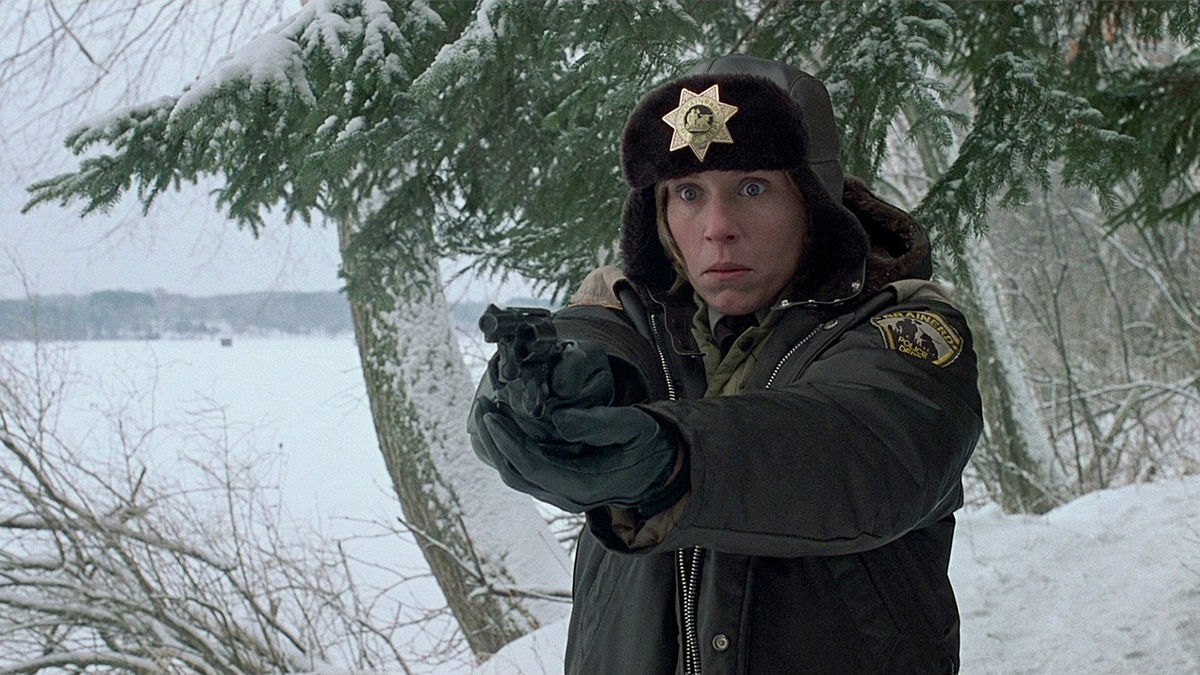Few films blend darkness and absurdity with as much precision as Fargo (1996). Written, produced, and directed by Joel and Ethan Coen, Fargo is a pitch-black comedy, a crime thriller, and a sardonic character study wrapped in a deceptively simple Midwestern setting. With a perfect balance of grotesque violence and deadpan humor, the Coens craft a uniquely American tragedy that examines greed, failure, and the cost of ordinary evil.
Loosely inspired by real events (a myth the Coens themselves created), Fargo has since become a cult classic and critical darling, earning multiple Academy Awards and spawning a successful anthology TV series.
The story is set in 1987, primarily in Minnesota and North Dakota, where snow blankets the roads and the locals speak with polite, singsong accents.
Jerry Lundegaard (William H. Macy) is a financially desperate car salesman in Minneapolis who concocts a plan to have his wife kidnapped so he can extort a ransom from his wealthy father-in-law, Wade Gustafson. He hires two criminals — the chatty, unstable Carl Showalter (Steve Buscemi) and the menacingly silent Gaear Grimsrud (Peter Stormare) — to carry out the job.
But from the start, nothing goes as planned. The criminals are clumsy and unpredictable. A routine traffic stop leads to a triple homicide. The crime spirals out of control, drawing the attention of Marge Gunderson (Frances McDormand), the pregnant police chief of Brainerd, Minnesota.
As Marge patiently and methodically investigates the murders, the body count rises. Jerry’s lies pile up, Carl grows more unstable, and the quiet bleakness of the snowy landscape becomes a chilling backdrop to human folly and violence.

Eventually, Marge’s sharp instincts and calm perseverance lead her to the truth. In one of the film’s most memorable scenes, she arrests Gaear after discovering him feeding Carl’s remains into a wood chipper.
At its core, Fargo is about the banality of evil. Jerry isn’t a master criminal — he’s a timid, insecure man driven by financial anxiety and male pride. His plan is not evil in a grandiose, cinematic way; it’s evil in its ordinariness. He simply wants to steal from his own family.
The Coens explore how small choices, when made out of desperation, snowball into chaos. Every character in the film — from the bumbling kidnappers to the cold-blooded Gaear — represents different shades of human corruption, whether by greed, apathy, or amorality.
In contrast, Marge Gunderson represents decency, clarity, and quiet strength. She doesn’t solve the case with violence or genius, but with compassion, patience, and a strong moral compass. Her character is a shining reminder that goodness — even in the coldest, bleakest places — can still prevail.
Frances McDormand won the Academy Award for Best Actress for her portrayal of Marge, and deservedly so. With her thick accent, waddling walk, and warm demeanor, she could have been a caricature — but McDormand gives her depth, intelligence, and dignity.

William H. Macy also delivers one of his most memorable performances. His Jerry is a portrait of quiet panic — a man constantly on the verge of collapse, trying to maintain his suburban normalcy while his crimes unravel around him.
Steve Buscemi and Peter Stormare are perfectly cast as the mismatched criminals: one mouthy and nervous, the other ice-cold and nearly silent. Their dynamic is both hilarious and chilling.
Roger Deakins’ cinematography turns the snowy Midwestern landscape into a character in its own right. The endless white fields, quiet highways, and small-town diners contrast the escalating violence with an almost surreal serenity.

The Coens use wide shots and long takes to emphasize isolation and helplessness. The stillness of the frame often makes the violence more jarring when it arrives.
The score by Carter Burwell complements this tone perfectly, blending melancholy with restraint, evoking both tragedy and absurdity.
The screenplay, which won the Academy Award for Best Original Screenplay, is deceptively simple. The dialogue is sparse but impactful, peppered with Minnesotan quirks like “You betcha” and “Oh yah,” which lend the film an air of warmth and regional authenticity.

But beneath the surface, Fargo is a sharp commentary on American capitalism, masculinity, and moral decay. It critiques the illusion of control and success, especially in a world where people like Jerry can lose everything trying to impress a man like Wade.
Fargo (1996) remains one of the greatest American films of the 1990s — a masterclass in storytelling that blends absurd humor with real emotional weight. It’s a crime story where the focus is not on action or suspense, but on the flawed, fumbling people behind the chaos, and the quiet hero who makes things right.
-1751510377-q80.webp)


